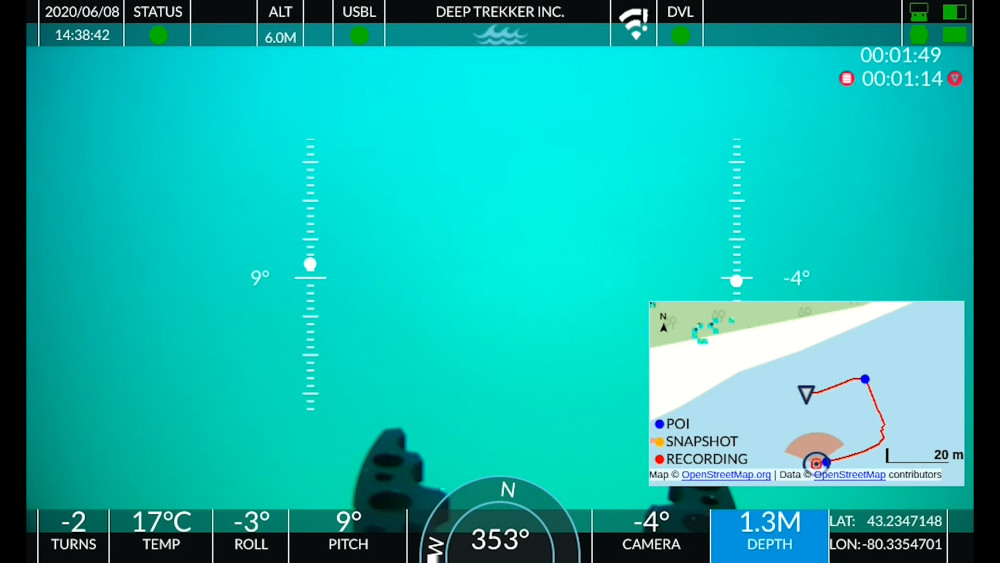Home › Forums › ROV › ROV Technical Discussions › RHL Thruster motors…closed or open loop hydraulic circut
- This topic has 22 replies, 11 voices, and was last updated 17 years ago by
oil_based.
-
AuthorPosts
-
December 3, 2007 at 5:18 pm #10295
rovnumpty
ParticipantRover37
Nope, no special tooing or anything. Just every bit of tooling you can think off ALL AT THE SAME TIME!
Whole thing was driven by BP America, initially to combat loop currents in the GOM. Anyone who’s worked the southern north sea would have been able to tell them it was a waste of time. Snowballed from there to being a work platform that would stay at depth (2000m) all the time, with all the most used tooling fitted and ready for use at any time.
Mr. Elephant, meet mr. White.
Scary bit is, they’re building loads more of them.
I was just interesed if any operators out there actually thought it was necesary.
December 3, 2007 at 6:54 pm #10296rover37
ParticipantMarley
Had the same trouble. Usually caused by overtightening at some stage.
SA provide a modified retaining kit. Difficult to explain but works on the expanding wedge idea.
You would think tightening a prop would be simple. not the case. Easy when you know how but make sure you follow the instructions and keep a laminated set on the shack wall for newcomers.
Sorry this thread is wandering a bit but all good stuff for a changeDecember 4, 2007 at 1:53 am #10297marley
ParticipantHi rovbionic, all of our thruster are susceptable it seems. The only thing we can see as the problem is that the shafts are straight and not tapered. The keys in the shafts have a jack out post as to simulate a tapered shaft. This is not really working. Also due to the straight shafts the props are being torqued back to the ceramic bushing and as they spin this is wearing the hub of the prop, which in turn produces slack and this slack allows the prop to back away from the nuts. Needless to say this allows the nuts to go slack. 8 new motors with tapered shafts is the answer to the problem but thats a big bill to ask for on one parts request. If anyone has any ideas they would be gratefully accepted.
December 4, 2007 at 11:35 pm #10298rovbionic
ParticipantWasn’t aware of the retaining kit….was the torque specs altered I wonder!
With all 8 being sussect ….no doubt SA have something to say.
I will be offshore on the 13th and will see if anything has been an issue on the ACV’sDecember 5, 2007 at 3:10 am #10299Horris
ParticipantHi Marley,
Not sure of the age or maodel of the SA thrusters you’re using.
We use SA 380, which dont have a tapered shaft design. They use a straight shaft. The prop is held by a key, which then has a locking key inserted into a gap between this longitudinal key and the keyhole in the shaft. This key is then fed into this gap by a castellated nut driven onto the shaft. The cremaic washer and Philidas nut then hold all in place.
Have had no reported problems with these thrusers so far. Therefore in effect the prop is held in position by the Philidas nut. Prop spins on the back wear ring, and the front cermaic washer. The Philidas Nut should be torqued to 25Nm and then locked in position. If you overtorque it, the clearances disappear and the prop may then gall into the creamic ring and may loosen the philidas nut. No advantage is achieved by overtorquing anyway. If the Philidas nut is bent into position correctly it should not loosen.
Let us knwo how you go, as if any problems would liek to know for our systems. 😯December 5, 2007 at 6:58 am #10300R2D2
ParticipantA question for those learned fellows out there..
W-T-F is a "Philidis" nut ?
Thanking you a thousand times in anticipation,
R2D2
( its all this talk of India yew-nohw )
December 5, 2007 at 7:01 am #10301R2D2
ParticipantFiddlesticks
just checked the spelling ….philidas …. das write!
Got it now. Isn’t the internet wonderful?
Thanks anyway.
Bollywood-bound
December 5, 2007 at 4:00 pm #10302oil_based
ParticipantRovbonic,
Under a hydraulic definition both systems you described are open loop as once the oil exits the motor it returns to tank.
Closed loop : a closed loop pump which has an A and B port to direct the flow to either side of the loop. The loop is maintained with a charge pressure supplied from a aux pump which in turn takes its supply from the tank. Therefore the main pump is only supplied from the loop ie closed loop.
-
AuthorPosts
- You must be logged in to reply to this topic.



